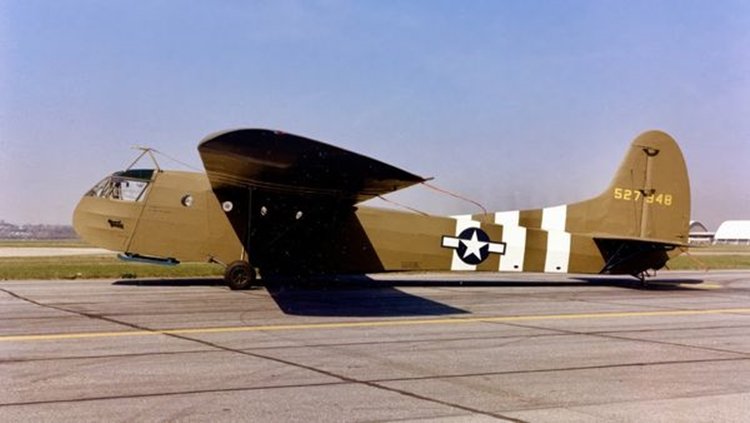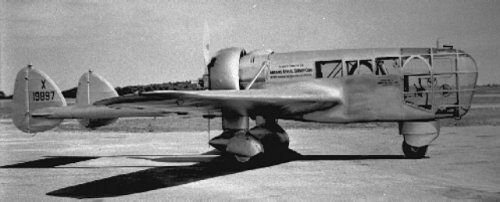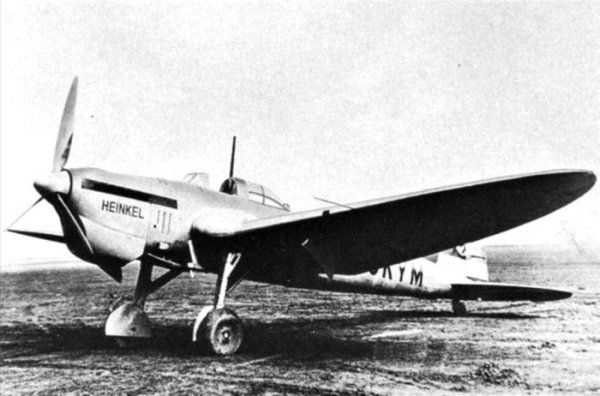-
Posts
7,582 -
Joined
-
Last visited
-
Days Won
67
Content Type
Profiles
Forums
Gallery
Downloads
Blogs
Events
Store
Aircraft
Resources
Tutorials
Articles
Classifieds
Movies
Books
Community Map
Quizzes
Videos Directory
Everything posted by red750
-
The Miles M.20 was a Second World War British fighter developed by Miles Aircraft in 1940. It was designed as a simple and quick-to-build "emergency fighter" alternative to the Royal Air Force's Spitfires and Hurricanes should their production become disrupted by bombing expected in the anticipated German invasion of the United Kingdom. Due to the subsequent shifting of the German bombing effort after the Battle of Britain towards British cities in what became known as The Blitz, together with the dispersal of British fighter manufacturing, the Luftwaffe's bombing of the original Spitfire and Hurricane factories did not seriously affect production, and so the M.20 proved unnecessary and the design was not pursued. To reduce production time the M.20 employed all-wood construction and used many parts from the earlier Miles Master trainer, lacked hydraulics, and had spatted fixed landing gear. The fixed undercarriage freed space and payload sufficient for twelve .303 Browning machine guns and 5000 rounds, and 154 Imperial gallons (700 litres) of fuel (double the range and ammunition capacity of the Hawker Hurricane and Supermarine Spitfire). The M.20 was fitted with a bubble canopy for improved 360-degree vision. Two prototypes built.
-
The Kayaba Heliplane Type-1 was a gyrodyne (compound autogyro) designed by Shiro Kayaba and prototyped by Kayaba Industry in Japan during the early 1950s. In March 1952, Kayaba Industry began the development of the Heliplane, a Gyrodyne, which combines the advantages of autogyro and helicopter. Kayaba took advantage of experience producing the Ka-Go Ka-1 and Ka-2 autogyros, intended for reconnaissance, artillery-spotting and anti-submarine use, developed during World War II. Kayaba received a subsidy of 2 million yen from the government of Japan for the development of the aircraft, as well as 1.2 million yen from Ishikawajima Heavy Industries (IHI) for development of the rotor-tip ramjets. The aircraft was modified from Cessna 170B. The wing was removed, and a three-blade main rotor with support structure was installed on the upper part of the fuselage. In addition, short-span fixed wings were fitted to either side of the lower fuselage. For initial testing the fixed pitch wooden propeller of the Cessna 170 was retained, but a 3-bladed variable-pitch propeller was to be fitted for flight testing. Ishikawajima had developed the Ne-0 ramjet during the war and tested it in flight beneath a Kawasaki Ki-48-II. A development of this ramjet was envisaged as the power source for the rotor drive. At takeoff, the rotor was to be started using the tip mounted ramjet engines, then transition to an autogyro powered by the propeller engine after the ramjets were stopped. One prototype unit was produced and almost completed in March 1954 (Showa 29), but was damaged in July 1954 during tie-down testing. Further development was cancelled before the aircraft was flown.
-
John, there is a profile of the EP.9 on this site. https://www.recreationalflying.com/aircraft/general-aviation-single-engine/edgar-percival-ep-9-prospector-r1224/
-
The Junkers Ju 60 was a single engine airliner built in prototype form in Germany in the early 1930s. It was designed to meet a requirement issued by the Reichsverkehrsministerium (Reich Transport Ministry) for a German-built equivalent to the Lockheed Vega with which to equip Deutsche Luft Hansa. The result was a sleek, cantilever monoplane of conventional configuration, with wings skinned in the corrugated duralumin that had been a hallmark of Junkers designs up to this time, although this would be the last Junkers aircraft to have this feature. The main units of the tailwheel undercarriage were retractable. The Ju 60 was evaluated by Deutsche Luft Hansa against the Heinkel He 70. With the latter able to demonstrate a top speed 75 km/h (47 mph) better than the Ju 60, development of the Junkers design was halted before the third prototype had been completed. The two examples that had already been constructed eventually saw service with the Luftwaffe as liaison aircraft until 1942. The work done on the design would later form the basis of the Ju 160.
-
The Fairchild 100 Pilgrim is an American single-engined high-wing monoplane transport, and was one of a series of single-engine utility transports built by Fairchild Aircraft. The 100 was similar in design to the Fairchild C-8 and was an enlarged version of it. The first flight of the aircraft (NC754Y) was October 22, 1930. Although only one aircraft was completed, a modified version also known as the Pilgrim 100-A was in production for American Airways, the first operator of the type in 1931. After a total of 16 aircraft, an additional batch of ten aircraft with a larger fin were manufactured by the restructured American Aircraft & Engine Corporation that emerged in 1931 from the Fairchild Aircraft Co. The continuing series was built under the designations, Pilgrim 100-B and American/Fairchild Y1C-24. The first six in the new series went to American Airways. The parent company later reinstated the Fairchild name. The sturdy Fairchild 100 series served as both an airliner and a bush plane. In 1932, the US Army Air Corps bought four Pilgrim Model 100-Bs designated the Y1C-24 and were initially assigned as light cargo transport and supply aircraft. After a short time in service, the Y1C-24s were adapted for use as aeromedical evacuation aircraft, carrying up to four litter patients. The aircraft were assigned to pilot training and pursuit aircraft airfields for use as crash rescue aircraft. Exploiting the Y1C-24's ability to take off and land in a relatively short distance, the Y1C-24s remained in service into the late 1930s when they were replaced by newer air ambulance aircraft. Variants Pilgrim 100 Prototype of the Pilgrim 100 family, powered by a 575 hp (429 kW) Pratt & Whitney R-1340 Wasp. designed by Virginius Clark, one built. Pilgrim 100-A aka American Pilgrim, powered by a 575 hp (429 kW) Pratt & Whitney Hornet B, derived directly from the Fairchild 100. 16 were built, all of which were operated by American Airways. Pilgrim 100-B Powered by a 575 hp (429 kW) Wright R-1820 Cyclone B, ten built, of which six for American Airways, and four to the US Army as the Fairchild Y1C-24. Fairchild Y1C-24 (Specifications below) Military designation for the US Army Y1C-24, four built, powered by 575 hp (429 kW) Wright R-1820-1 Cyclone engines. Pilgrim Y1C-24 Alternative military designation for the US Army Y1C-24.
-
The KhAI-24 was designed by students of the Kharkiv Aviation Institute for an Estonian Ministry for the Energy Industry competition for a light autogyro for power cable inspection. The two-seat autogyro had an enclosed cabin and a tricycle landing gear, it was powered by a 115 hp (86 kW) Walter M332 aircraft engine driving a tractor configuration two-bladed propeller. A three-bladed rotor was fitted above the cabin. A full-scale model was displayed in 1966 in Moscow and the autogyro was tested in 1967 but nothing else is known.
-
The Focke-Wulf Ta 152 is a World War II German high-altitude fighter-interceptor designed by Kurt Tank and produced by Focke-Wulf. The Ta 152 was a development of the Focke-Wulf Fw 190 aircraft. It was intended to be made in at least three versions—the Ta 152H Höhenjäger ("high-altitude fighter"); the Ta 152C designed for medium-altitude operations and ground-attack, using a Daimler-Benz DB 603 and smaller wings; and the Ta 152E fighter-reconnaissance aircraft with the engine of the H model and the wing of the C model. The first Ta 152H entered service with the Luftwaffe in January 1945. The Ta 152 was produced too late and in insufficient numbers to have a significant role in the war. The Fw 190's BMW 801 engine was originally designed for bomber and transport aircraft flying at medium altitudes in the 15,000 to 20,000 feet (4,600 to 6,100 m) range. In keeping with this role it used a relatively simple single-stage supercharger that lacked performance above 20,000 feet (6,100 m) altitude. This presented a problem for fighter use, where high-altitude performance was desirable. Through careful tuning, the Fw 190 instead emerged as a powerful medium altitude design. Several experimental models of the 190 with different engines were tested with improved high altitude performance, but these were not high priority projects. Allied heavy bombers and escort fighters began flying operations at higher altitudes, around 25,000 feet (7,600 m). At these altitudes, the 190 found itself at a disadvantage, becoming acute in early 1944 when the long range P-51 Mustang arrived in quantity. This led to the introduction of the Fw 190D-9, mounting the Junkers Jumo 213E engine. This engine had a two-stage supercharger and much better altitude performance. However, the rest of the aircraft's design, especially the relatively short wings, made it difficult to fly at high altitudes. While the D-9 upgrade was expedient, it was not ideal. High-altitude fighters Rumours of the B-29, which would cruise at altitudes at which no German aircraft could comfortably operate, added impetus for a dedicated high-altitude design. The Reichsluftfahrtministerium (German Air Ministry, or "RLM") requested proposals from both Focke-Wulf and Messerschmitt for a high-altitude interceptor. Messerschmitt answered with the Bf 109H, and Focke-Wulf entered a range of designs; the Fw 190 Raffat-1 (Ra-1) fighter would replace the existing 190D series, the Ra-2 was a dedicated high altitude fighter, and the Ra-3 was a ground-attack aircraft. These designs developed into the Fw 190 V20 (Ta 152A), V21 (Ta 152B) and V30 (Ta 152H) prototypes, all based on the 190D-9 but with varying degrees of improvement. The V20 used the same Jumo 213E engine as the Fw 190D-9, while the V21 used the DB 603E. Neither of these offered any significant improvement over the 190D-9, and further development of the Ta 152A and B was cancelled. The V21 airframe, however, was further modified as the V21/U1 and became the prototype for the Ta 152C. The Ta 152's fuselage was an extended version of the Fw 190D-9 fuselage with wider-chord fixed vertical tail surfaces (especially the top half), and hydraulic rather than electrically controlled undercarriage and flaps. Due to the changes in the center of gravity and overall balance, the nose was also lengthened.[5][page needed] The D-9 retained the 10.51 metres (34.5 ft) wingspan of the original pre-war Fw 190 models, but this was slightly extended for the C model to 11 metres (36 ft), and greatly extended for the H model to 14.44 metres (47.4 ft), which gave it much better control at high altitudes at the cost of speed at lower altitudes. Due to the war's impact on aluminium availability, the wing was built around two steel spars, the front extending from just past the landing gear attachment points, and the rear spar spanning the entire wing. The wing itself was designed with 3° of washout, from the root to the flap-aileron junction, to prevent the ailerons from stalling before the centre section of the wing. For more details of design and development, operational history and 8 variants, click here. A total of 69 Ta 152's were built.
-
The North American AJ Savage (later A-2 Savage) is an American carrier-based medium bomber built for the United States Navy by North American Aviation. The aircraft was designed shortly after World War II to carry atomic bombs and this meant that the bomber was the heaviest aircraft thus far designed to operate from an aircraft carrier. It was powered by two piston engines and a turbojet buried in the rear fuselage. The AJ-1 first became operational in 1950 and several were based in South Korea during 1953 as a deterrent against North Korea. Of the 140 built, plus three prototypes, 30 were reconnaissance aircraft. Inflight-refueling equipment was deployed on the Savage in the mid-1950s. The bomber was replaced by the Douglas A3D Skywarrior beginning in 1957. The type was used after its military service for some additional experiments including microgravity test flights and to test a new jet engine in the 1960s and 70s. At the end of World War II, the U.S. Navy began a design competition on 13 August 1945 for a carrier-based bomber which could carry a 10,000-pound (4,536 kg) bomb that was won by North American Aviation. Later that year, the Navy decided that it needed to be able to deliver atomic bombs and that the AJ Savage design would be adapted to accommodate the latest Mark 4 nuclear bomb, the next step in development from the more sophisticated imploding-plutonium-sphere design Fat Man Mk3 used on Nagasaki. A contract for three XAJ-1 prototypes and a static test airframe was awarded on 24 June 1946. The first prototype made its maiden flight two years later on 3 July 1948. That same year the US Navy began an interim capability program employing the Lockheed P-2 Neptune carrying a crash-program reproduction of the smaller, simpler all-uranium 'gun' design Little Boy nuclear bomb as its first carrier-launched nuclear bomber aircraft until the Savage was in service. The Neptune launched using JATO assist but could not land on existing carriers; if launched they had to either ditch at sea after the mission or land at a friendly airbase. The AJ-1 was a three-seat, high-wing monoplane with tricycle landing gear. To facilitate carrier operations, the outer wing panels and the tailfin could be manually folded. It was fitted with two 2,300-brake-horsepower (1,700 kW) Pratt & Whitney R-2800-44W Double Wasp piston engines, mounted in nacelles under each wing with a large turbocharger fitted inside each engine nacelle, and a 4,600-pound-force (20,000 N) Allison J33-A-10 turbojet was fitted in the rear fuselage. The jet engine was only intended for takeoff and maximum speed near the target, and was fed by an air inlet on top of the fuselage that was normally kept closed to reduce drag.[6] To simplify the fuel system, the jet engine used piston engine avgas rather than jet fuel. One 201-US-gallon (760 L; 167 imp gal) self-sealing fuel tank was housed in the fuselage, and another 508-US-gallon (1,920 L; 423 imp gal) tank was located in each wing. The aircraft usually carried 300-US-gallon (1,100 L; 250 imp gal) tip tanks and it could house three fuel tanks in the bomb bay with a total capacity of 1,640 US gallons (6,200 L; 1,370 imp gal). Other than its 12,000-pound (5,400 kg) bombload, the bomber was unarmed. Two of the three prototypes crashed during testing, but their loss did not materially affect the development of the aircraft as the first batch of Savages had been ordered on 6 October 1947. The most significant difference between the XAJ-1 and the production aircraft was the revision of the cockpit to accommodate a third crewman in a separate compartment. The first flight by a production aircraft occurred in May 1949 and Fleet Composite Squadron 5 (VC-5) became the first squadron to receive a Savage in September. The squadron participated in testing and evaluating the aircraft together with the Naval Air Test Center (NATC) in order to expedite the Savage's introduction into the fleet. The first carrier takeoff and landing made by the bomber took place from the USS Coral Sea on 21 April and 31 August 1950, respectively. Many, if not most, surviving AJ-1s had their tails upgraded to the improved AJ-2 configuration. A photo-reconnaissance version of the Savage, initially known as the AJ-1P, but later designated as the AJ-2P, was ordered on 18 August 1950. It had improved R-2800-48 piston engines and the tail was redesigned to add 1 foot (30 cm) of height to the tailfin. The 12° dihedral of the tail stabilizers was eliminated and the rudder enlarged which slightly lengthened the aircraft. Early AJ-2Ps retained the three-man crew, but late-model aircraft added a fourth aft-facing crewman to the upper cockpit. The Savage's internal fuel capacity was also increased. The nose of the aircraft was remodeled with a prominent "chin" to accommodate a forward-looking oblique camera and a variety of oblique and vertical cameras could be fitted in the bomb bay. Photoflash bombs could be carried for night photography missions. The AJ-2 incorporated all of the changes made to the late model AJ-2P and 55 aircraft were ordered on 14 February 1951. The AJ-2 deleted the separate compartment for the third crewman, but retained the third seat in the cockpit from the AJ-2P. For details of operational history an the 13 variants, click here. All up, a total of 143 were built.
-
The Soko J-20 Kraguj (from Serbian: крагуј, lit. 'sparrowhawk') is a light military, single-engine, low-wing single-seat aircraft with a metal airframe, capable of performing close air support, counterinsurgency (COIN), and reconnaissance missions, that was designed by VTI and manufactured by SOKO of Yugoslavia, first flown in 1962. It is of classic semi-monocoque, metal structure with a slightly tapered wing. The pilot is accommodated in an enclosed, heated and ventilated cockpit with adjustable seats. The cockpit canopy slides backwards to open. The landing gear is non-retractable with a tail wheel. Rubber dampers provide shock absorption, and hydraulic brakes are used for wheel braking. The power plant comprises one 340 hp Textron Lycoming GSO-480-B1J6 piston engine and Hartzell HC-B3Z20-1/10151C-5 three-blade metal variable-pitch propeller. The engine cooling airflow is intensified by means of two specially designed ejectors. 36 US Gal of fuel contained in two rubber tanks enables a flight range of 350 NM for the fully armed configuration of the aircraft. 28 V DC electric power is supplied from a 1,5 kW generator and a storage battery. De-fogging and de-icing of the windshield is done by blowing of hot air. The aircraft was specially designed for low-altitude missions against day and night visible ground targets in a broad area. It was readily available to be loaded with weapons and supplied through a flexible system of auxiliary airfields that required no special preparations, especially in mountainous regions. Yugoslav military planners assumed that potential aggressor will first disable airfields. Therefore, J-20 Kraguj was designed to take-off from short unprepared runways, even ones covered in deep snow when fitted with skis. It was also called a "Partisan aircraft". The Kraguj P-2 was intended for close ground force support, and could be used for training of pilots in visual day/night flights, aiming, missile firing and bombing of ground targets.
-
The Avro Canada CF-100 Canuck (affectionately known as the "Clunk") is a Canadian twinjet interceptor/fighter designed and produced by aircraft manufacturer Avro Canada. It has the distinction of being the only Canadian-designed fighter to enter mass production. Work commenced in October 1946 in response to a Royal Canadian Air Force (RCAF) specification calling for a new jet-powered interceptor/fighter aircraft suitable for long-distance patrol missions and all-weather operations. On 19 January 1950, the CF-100 Mark 1 prototype, 18101, conducted its maiden flight, powered by a pair of Rolls-Royce Avon RA 3 turbojet engines. Both pre-production and production series aircraft were powered by the domestically-developed Avro Orenda engine instead. Flight testing proved the CF-100 to possess a relatively short takeoff run and a high climb rate, making it well suited to its role as an interceptor. On 18 December 1952, Squadron Leader Janusz Żurakowski, the Avro company chief development test pilot, took the CF-100 Mk 4 prototype up to Mach 1.10 in a dive from 14,000 m (45,000 ft), making the type the first straight-winged jet aircraft to achieve controlled supersonic flight. The CF-100 principally served with the Royal Canadian Air Force and Canadian Armed Forces; it was also procured in small numbers by Belgium to equip the Belgian Air Component. Introduced during 1952 amid the Cold War, the CF-100 was typically deployed at both NATO bases in Europe and in North America as part of North American Aerospace Defense Command (NORAD). In addition to the type's use by frontline squadrons, it was also supplied to operational training units and frequently used for other secondary duties, including aerial reconnaissance and electronic warfare roles. During the early 1950s, the Avro Canada CF-103, an advanced derivative of the CF-100 that adopted a swept wing and was capable of transonic speeds, was in development, but was terminated. Further development of these concepts ultimately led to the Avro Canada CF-105 Arrow. During 1981, all of the remaining RCAF CF-100s were withdrawn from service, having been succeeded in the electronic warfare role by the CC-117 Falcon. A total of 692 CF-100's were built. Zor details of the development and design, flight testing. production, operational history and 16 variants, click here.
-
The Model 73 "Jet Mentor" was Beechcraft's design for the concept the U.S. Air Force and (to a lesser extent) U.S. Navy espoused in the mid-to-late 1950s: that pilot trainees could be given their entire training syllabus, from first flight to operational service, without ever setting foot in a propeller-driven aircraft. It was heavily based on the existing, piston-engined T-34 Mentor primary trainer, with a new forwards fuselage, canopy, and wing-root air intakes for the jet. Both services evaluated the Model 73; the Air Force selected the Cessna T-37 for the requirement; the Navy chose instead the Temco TT-1 Pinto . The Navy quickly came to its senses, retired the TT-1s after a year due to their being underpowered dogs, and went back to a standard "start them in props, graduate to jets" course; the Air Force took longer but finally realised starting pilots in jets was a little bit of a bad idea and bought Cessna 172s.
-

Wing Aviation Pty Ltd drones - coming soon to Melbourne
red750 replied to SGM's topic in AUS/NZ General Discussion
Received a flyer in the mailbox yesterday saying they will be starting in our area shortly, delivering Doordash takeaway amongst other things. -
The Bell YFM-1 Airacuda was an American heavy fighter aircraft, developed by the Bell Aircraft Corporation for the United States Army Air Corps during the mid-1930s. It was the first military aircraft produced by Bell. Originally designated the Bell Model 1, the Airacuda first flew on 1 September 1937. The Airacuda was marked by bold design advances and considerable flaws that eventually grounded the aircraft. The Airacuda was Bell Aircraft's answer for a "bomber destroyer" aircraft. Although it did see limited production, and one fully operational squadron was eventually formed, only one prototype and 12 production models were ultimately built, in three slightly different versions. In an effort to break into the aviation business, Bell Aircraft created a unique fighter concept touted to be "a mobile anti-aircraft platform" as well as a "convoy fighter." Created to intercept enemy bombers at distances beyond the range of single-seat fighter interceptors, the YFM-1 (Y, service test; F, fighter; M, multiplace) was an innovative design incorporating many features never before seen in a military aircraft, as well as several never seen again. Using a streamlined, "futuristic" design, the Bell Airacuda appeared to be "unlike any other fighters up to that time." According to Major Alexander De Seversky's 1942 book, Victory Through Air Power, the Bell Airacuda "represents a great engineering achievement. But its designation as ′convoy fighter′ is erroneous, since that requires different disposition of armament. With its maximum firepower directed forward, it really offers a preview of an effective long-range interceptor fighter." A forward-firing 37 mm (1.46 in) M4 cannon with an accompanying gunner was mounted in a forward compartment of each of the two engine nacelles. Although capable of aiming the cannons, the gunners' primary purpose was simply to load them with the 110 rounds of ammunition stored in each nacelle. The crew of five included the pilot and gunners; a copilot/navigator who doubled as a fire-control officer, using a Sperry Instruments "Thermionic" fire control system (originally developed for anti-aircraft cannon) combined with a gyro-stabilised and an optical sight to aim the weapons; and a radio operator/gunner armed with a pair of machine guns stationed at mid-fuselage waist blisters for defense against attack from the rear. An unusual feature of the Airacuda was the main door for entry. The door was opened and pulled down and hinges folded in on three steps for the crew to climb into the aircraft. For details of design flaws, operational history and variants, click here
-
Mwari is a new light, multirole aircraft being developed by Paramount Group for armed forces across the globe. It is a military variant of the Advanced High Performance Reconnaissance Light Aircraft (AHRLAC). The Mwari project was unveiled in May 2016. Paramount and Boeing made a cooperation agreement in September 2014 for collaborating on specific projects to be implemented in future. The agreement was extended in May 2016 to jointly develop an advanced mission system for the Mwari aircraft. . The cost-effective Mwari multirole aircraft can be deployed in border patrol, counter insurgency missions, forward air control, forward airdrop and resupply, armed reconnaissance, and electronic intelligence (ELINT) and communication intelligence (COMINT) missions. Other mission capabilities will include internal security, disaster management and maritime patrol. Incorporating a twin-boom design, the Mwari aircraft will feature airframe constructed using meal and composite materials. The longitudinal booms at empennage feature a pair of vertical stabilisers joined by a horizontal stabiliser. The high-wing design will improve visibility for the crew, while allowing operations from unprepared airfields. The modular design will also support the integration of different mission systems for a range of military operations. The aircraft will have a length of 10.5m, wing span of 12m and a height of 4m. The maximum take-off weight of the aircraft is 3,800kg and maximum payload capacity with full fuel load will be more than 800kg.
-
The XCG-16 was a military transport/assault glider ordered by the United States Army Air Forces (USAAF), from General Airborne Transport Co., for competition against the Waco CG-13A at Wright Field. The XCG-16’s preferred tow aircraft was the Lockheed Model 18 Lodestar. Design of the CG-16 evolved from the lifting fuselage theories of Vincent Burnelli laid out in U.S. Patent No. 1,758,498, issued on 13 May 1930, which advocated the use of "lifting fuselages" providing a high proportion of the total lift. To enter a competition at Wright Field for a new assault glider for the USAAF, Hawley Bowlus and Albert Criz designed a Burnelli style lifting fuselage assault glider as the Bowlus-Criz MC-1. To prove the concept and aerodynamic qualities Bowlus designed a 1:2 scale prototype, which flew successfully. The flight tests of the 1:2 scale MC-1 maintained confidence in the full-sized glider. A contract for three MC-1 gliders, two flyable and one for static testing, was given to the Airborne and General aircraft company, which had been formed by Bowlus and Criz. This company soon transformed into the General Airborne Transport company, which built the full sized MC-1 gliders with the military designation XCG-16.
-
The Lockheed XFV (sometimes referred to as the "Salmon") was an American experimental tailsitter prototype aircraft built by Lockheed in the early 1950s to demonstrate the operation of a vertical takeoff and landing (VTOL) fighter for protecting convoys. The Lockheed XFV originated as a result of a proposal issued by the U.S. Navy in 1948 for an aircraft capable of vertical takeoff and landing (VTOL) aboard platforms mounted on the afterdecks of conventional ships. Both Convair and Lockheed competed for the contract but in 1950, the requirement was revised, with a call for a research aircraft capable of eventually evolving into a VTOL ship-based convoy escort fighter. On 19 April 1951, two prototypes were ordered from Lockheed under the designation XFO-1 (company designation was Model 081-40-01). Soon after the contract was awarded, the project designation changed to XFV-1 when the Navy's code for Lockheed was changed from O to V. The XFV was powered by a 5,332 hp (3,976 kW) Allison YT40-A-6 turboprop engine driving three-bladed contra-rotating propellers. The tail surfaces were a reflected cruciform v-tail (forming an x) that extended above and below the fuselage. The aircraft had an ungainly appearance on the ground with a makeshift, fixed landing gear attached. Lockheed employees derisively nicknamed the aircraft the "pogo stick" (a direct reference to the rival Convair XFY's name).
-
The Caproni Campini N.1, also known as the C.C.2, is an experimental jet aircraft built in the 1930s by Italian aircraft manufacturer Caproni. The N.1 first flew in 1940 and was briefly regarded as the first successful jet-powered aircraft in history, before news emerged of the German Heinkel He 178's first flight a year earlier. During 1931, Italian aeronautics engineer Secondo Campini submitted his studies on jet propulsion, including a proposal for a so-called thermo-jet to power an aircraft. Following a high-profile demonstration of a jet-powered boat in Venice, Campini was rewarded with an initial contract issued by the Italian government to develop and manufacture his proposed engine. During 1934, the Regia Aeronautica (the Italian Air Force) granted its approval to proceed with the production of a pair of jet-powered prototype aircraft. To produce this aircraft, which was officially designated as the N.1, Campini formed an arrangement with the larger Caproni aviation manufacturer. The N.1 is powered by a motorjet, a type of jet engine in which the compressor is driven by a conventional reciprocating engine. On 27 August 1940, the first flight of the N.1 took place at the Caproni facility in Taliedo, outside of Milan, flown by Mario de Bernardi. The N.1 achieved mixed results; while it was perceived and commended as a crucial milestone in aviation (until the revelation of the He 178's earlier flight), the performance of the aircraft was unimpressive. Specifically, it was slower than many existing conventional aircraft of the era, while the motorjet engine was incapable of producing sufficient thrust to deliver adequate performance for a fighter aircraft. As such, the N.1 programme never led to any operational combat aircraft, and the motorjet design was soon superseded by more powerful turbojets. Only one of the two examples of the N.1 to have been constructed has survived to the present day.
-
The Potez 75 was a low-cost, simple, ground-support, observation and launch aircraft for anti-tank missiles, designed and built in the early 1950s, for use in colonial conflicts. One hundred and fifteen were ordered in 1956, but cancelled in 1957. Only the prototype was built. The Potez 75 was developed by the reformed Potez Company which had originally been founded by Henry Potez in 1919. The type was designed to meet the requirement for a launching platform for Nord SS.10 wire-guided anti-tank missiles. It was of all-metal construction, with a pusher engine. The twin fins and tailplane were carried on two booms extending from the lower rear fuselage and it was fitted with a fixed tricycle undercarriage. The missile operator sat in the nose, behind which was a small upper cabin accommodating the pilot Initially the operator's cabin had windows and the pilot's position was open, but later modifications enclosed the latter and provided the operator with better visibility by full glazing. Exhibited at the May 1957 Paris Air Show, the prototype was subsequently used as a liaison aircraft and scrapped after crash landing on 16 September 1958.
-
The Extra EA-500 is a six-seat single-engined high wing turboprop aircraft designed by the Extra Aircraft company. During 2015 a decision was made to end production. Started by Walter Extra, the company has been manufacturing aerobatic airplanes almost exclusively with their latest products being the Extra EA-300 series. The company introduced the Extra EA-400 in 2001. This is a cross-country airplane with many exclusive features including carbon fiber construction, pressurized cabin, high strutless wing, and seating for six. The EA-500 was introduced as an alternative version of the EA-400 with the piston engine replaced by a Rolls-Royce Model 250-B17F/2 turboprop yielding 450 horsepower (340 kW), weighing 205 pounds (93 kg), and driving a 5 bladed propeller. This engine is widely used in small helicopters and was designed to have good fuel efficiency at lower altitudes. This engine's critical altitude is 16,000 feet. However, the Rolls-Royce Model 250 is very light and small at the expense of power. The maximum cruise speed is 225 kn at 12000 feet. The most recent changes to the aircraft come from Avidyne with their latest glass avionics, Entegra R9. The high wing design was used for a number of reasons, including no wing spar in the cabin and in the event of a dual fuel pump failure, fuel flow is helped by gravity. The EA-500's cabin is spacious, 55 inches across by 49 inches tall; also the windshield has a fast taper, which wraps up around the two pilots. The EA-500 has a T-tail instead of a regular tail to keep the elevator surfaces out of the prop wash; therefore minimizing pitch changes due to power changes. Like the Extra EA-400, the EA-500 is made of mostly composite materials, that mostly being carbon fiber. The company was planning to produce the EA-500 for the United States market, and was investigating plans to assemble the aircraft in the US. The EA500 type certificate is currently held by SST Flugtechnik, which provides customer support to the current EA400 and EA400-500 operators. In 2014 the company sold the design rights to the EA400 and 500 to the Chinese company Jiangsu A-Star Industry Co., Ltd. Extra embarked on training the engineers from Jiangsu A-Star while still retaining the type certificate and providing parts to support to the existing fleet. The EA-500's approach speed of 90-120 knots and turbine power makes it able to land on 2,000 ft runways. The EA-500 is also cheaper than its competitors, mainly the SOCATA TBM 850 and Pilatus PC-12.
-
The Hirsch or Hirsch-MAéRC H.100 is an experimental aircraft, built in France in the 1950s to test an aerodynamic gust suppression system. The system worked but was not further developed. René Hirsch had been working on aerodynamic methods that would stabilize an aircraft meeting a gust since 1936 and had set up a company to this end, Moyens aérodynamiques de regulation et de contrôle (MAéRC) (English: Aerodynamic means of regulation and control). Making its first flight on 15 June 1954, the H.100 incorporated the results of his research[1] but was MAéRC's only aircraft. Control systems apart, the H.100 was a fairly conventional twin engine, wooden aircraft, with a cantilever low wing of trapezoidal plan. The fuselage was strikingly clean aerodynamically, with only gradual changes of cross-section from nose to tail. Behind the pilot's transparency there were three starboard and two port side windows. The horizontal surfaces, mounted on top of the fuselage, had both a high aspect ratio and marked dihedral. Originally the vertical tail was rounded and quite small but during development a large, straight tapered ventral fin was added. The H.100 had a tall, rearward retracting tricycle undercarriage. The main legs retracted into extensions of the engine fairings beyond the wing trailing edge.
-
The Waco CG-4 was the most widely used American troop/cargo military glider of World War II. It was designated the CG-4A by the United States Army Air Forces, and given the service name Hadrian (after the Roman emperor) by the British. The glider was designed by the Waco Aircraft Company. Flight testing began in May 1942. More than 13,900 CG-4As were eventually delivered. The CG-4A was constructed of fabric-covered wood and metal and was crewed by a pilot and copilot. It had two fixed mainwheels and a tailwheel. The CG-4A could carry 13 troops and their equipment. Cargo loads could be a 1⁄4-ton truck (i.e. a Jeep), a 75 mm howitzer, or a 1⁄4-ton trailer, loaded through the upward-hinged nose section. Douglas C-47 Skytrains were usually used as tow aircraft. A few Curtiss C-46 Commando tugs were used during and after the Operation Plunder crossing of the Rhine in March 1945. (17 mm) nylon, 350 feet (110 m) long. The CG-4A pickup line was 15⁄16 inch (24 mm) diameter nylon, but only 225 ft (69 m) long including the doubled loop. In an effort to identify areas where strategic materials could be reduced, a single XCG-4B was built at the Timm Aircraft Corporation using wood for the main structure. The 16 companies that were prime contractors for manufacturing the CG-4A were: Babcock Aircraft Company of DeLand, Florida (60 units at $51,000 each) For details of operational history Cessna Aircraft Company of Wichita, Kansas (750 units) The entire order was subcontracted to Boeing Aircraft Company's new Wichita plant. Commonwealth Aircraft of Kansas City, Kansas (1470 units) Ford Motor Company of Kingsford, Michigan (4,190 units at $14,891 each) G&A Aircraft of Willow Grove, Pennsylvania (627 units) General Aircraft Corporation of Astoria, Queens, New York) (1,112 units) Gibson Refrigerator of Greenville, Michigan (1,078 units) Laister-Kauffman Corporation of St. Louis, Missouri (310 units) National Aircraft Corp. of Elwood, Indiana (one unit, at an astronomical $1,741,809) Northwestern Aeronautical Corporation of Minneapolis, Minnesota (1,510 units) Pratt-Read of Deep River, Connecticut (956 units) Ridgefield Manufacturing Company of Ridgefield, New Jersey (156 units) Robertson Aircraft Corporation of St. Louis, Missouri (170 units) Timm Aircraft Company of Van Nuys, California (434 units) Waco Aircraft Company of Troy, Ohio (1074 [999] units at $19,367 each) Ward Furniture Company of Fort Smith, Arkansas (7 units) The factories ran 24-hour shifts to build the gliders. For details of operational history and variants, click here.
-
The McCulloch Model MC-4 was an American tandem-rotor helicopter and was the first helicopter developed by McCulloch Aircraft Corporation, a division of McCulloch Motors Corporation.[1] It was evaluated by the United States Army as the YH-30 and the United States Navy as the XHUM-1. The MC-4 was a larger version of the earlier HERC JOV-3 tandem-rotor helicopter and was developed by the McCulloch Aircraft Corporation. The JOV-3 was developed by Jovanovich when he headed the Helicopter Engineering and Research Corporation. The JOV-3 first flew in 1948. In 1949, Jovanovich moved to the McCulloch Motors Corporation, where an enlarged helicopter, the MC-4, first flew in March 1951. It was followed by a similar MC-4C and three evaluation helicopters for the United States Army (as the YH-30). The MC-4C was slightly larger than the MC-4. When the MC-4C was certified in 1953, it was the first tandem-rotor helicopter to be certified in the United States for commercial use. Three examples were evaluated by the United States Army as the YH-30, but the Army's evaluation showed the helicopter to be underpowered. The YH-30 had a steel tube framework with a light metal skin, A single 200 hp Franklin piston engine was horizontally mounted amidships and powered two intermeshing tandem rotors. It had a fixed-wheel tricycle landing gear with a castering nosewheel. No civil or military orders were received and Jovanovich formed his own company, the Jovair Corporation, where he modified the MC-4C as a prototype for a four-seat private helicopter designated the Sedan 4E. The Sedan 4E was powered by a 210 hp Franklin 6A-335 engine. A version with a turbocharged engine was designed as the Sedan 4ES and a more basic Sedan 4A for agricultural use. By 1965 a small number of Sedan helicopters were built. In the early 1970s, McCulloch regained the rights to the helicopter designs. Variants McCulloch MC-4 Prototype with a 165 hp Franklin engine, two built, one for evaluation by the United States Navy. McCulloch MC-4A Variant for evaluation by the United States Navy as the XHUM-1, two built. McCulloch MC-4C Prototype with a 200 hp Franklin engine, one built and an additional three for United States Army evaluation as the YH-30. Jovair Sedan 4E Production civil four-seat version powered by a 210 hp Franklin 6A-335 engine. Jovair Sedan 4ES Sedan with a turbocharged 225 hp Franklin engine. Jovair Sedan 4A Simplified agricultural version. Military designations YH-30 Military version of the MC-4C, three built. (Specifications below) CHUM-1 Two MC-4As for evaluation by the United States Navy, later redesignated HUM-1.
-
The Abrams P-1 Explorer was an American purpose-designed aerial photography and survey aircraft that first flew in November 1937. The Explorer was designed by aerial survey pioneer Talbert Abrams, to meet his needs for a stable aircraft with excellent visibility for his work. Abrams was an early aerial photographer in World War I. He used a Curtiss Jenny post-war, forming ABC airlines. In 1923, Abrams founded Abrams Aerial Survey Company and in 1937, Abrams Aircraft Corporation to build the specialized P-1 aircraft. Only 1 built. For more details, click here.
-
The Heinkel He 118 was a prototype German monoplane dive bomber design that lost out to the Junkers Ju 87 Stuka in the 1930s, and was never ordered by the Luftwaffe.


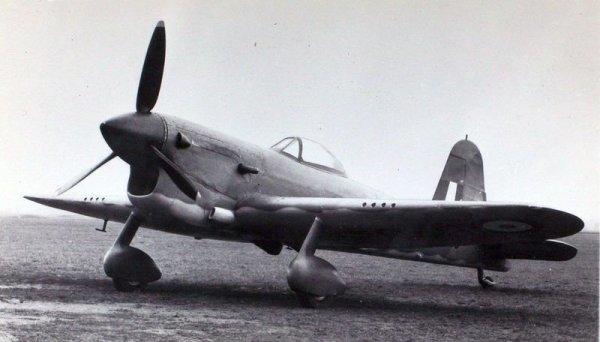


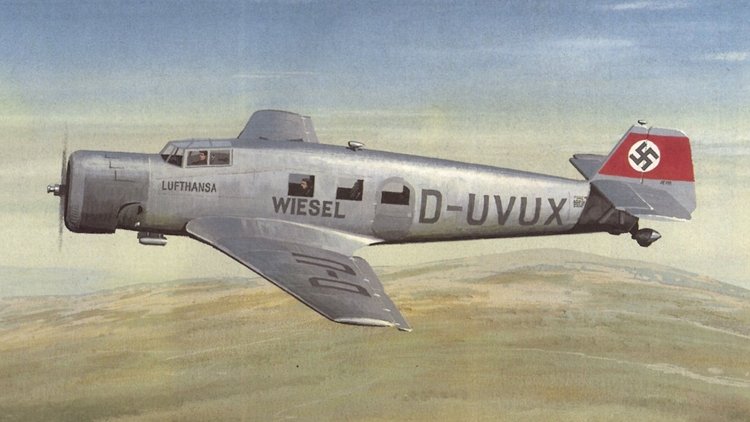
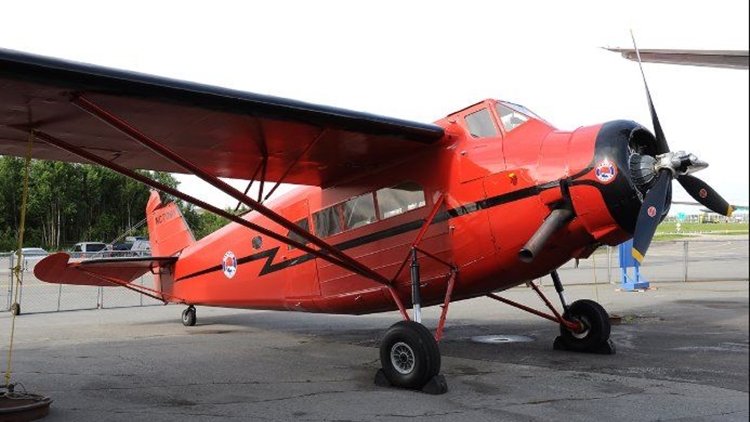
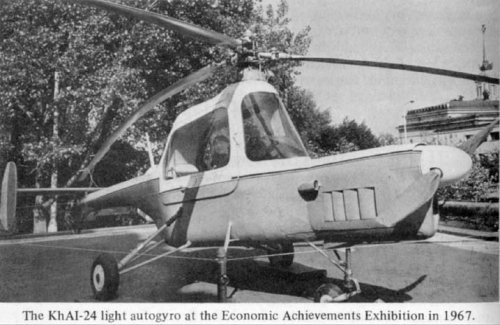
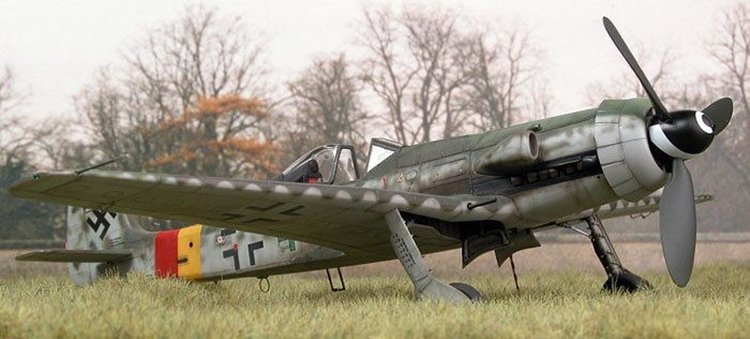
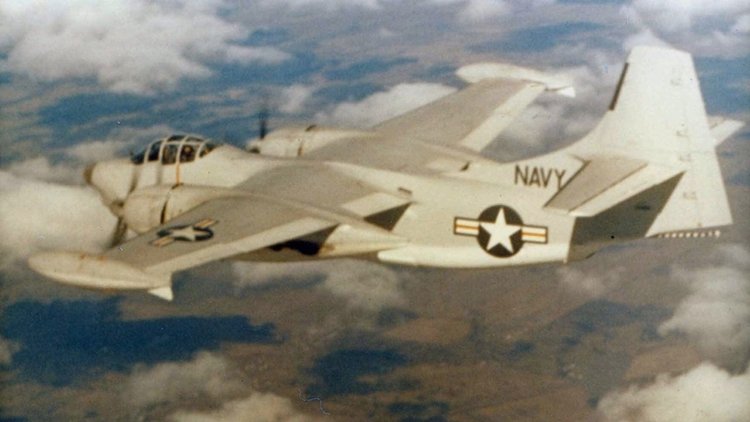
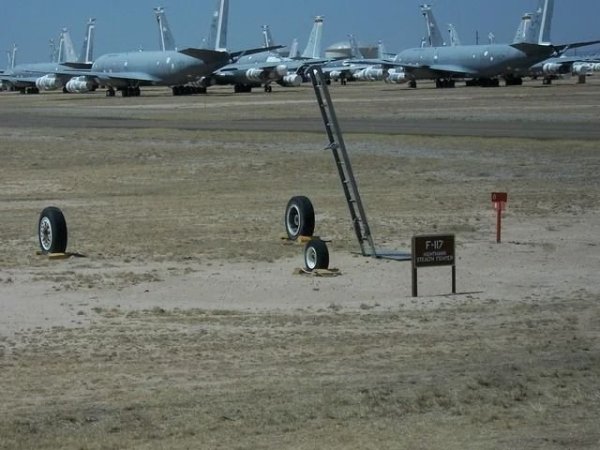


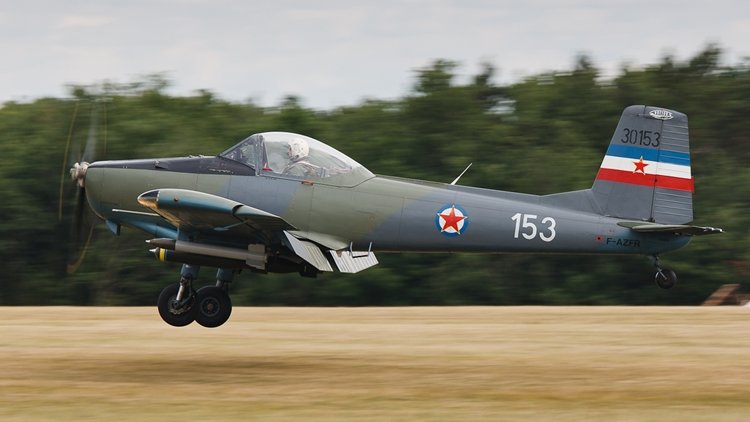
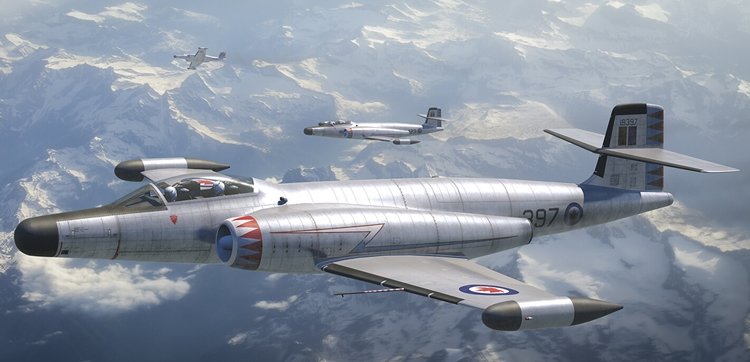
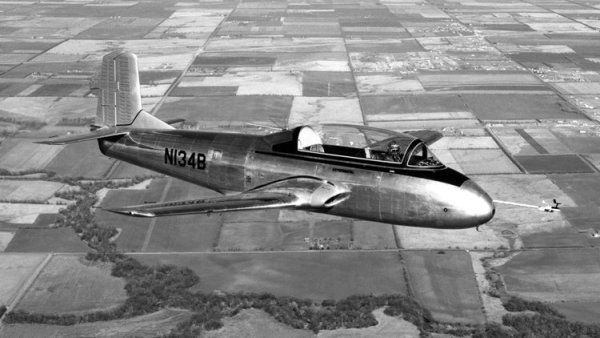
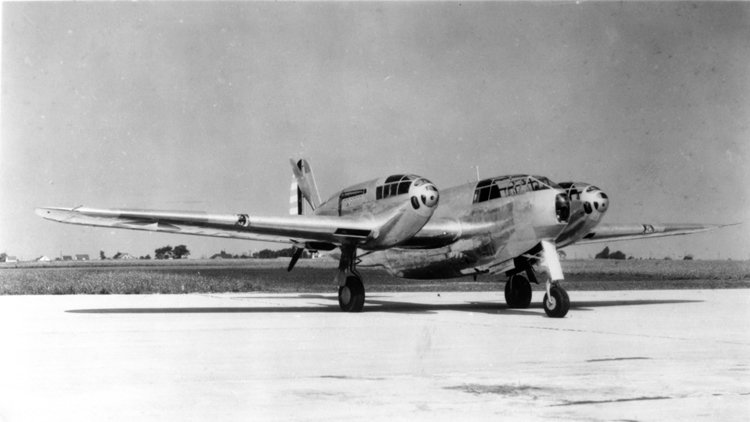
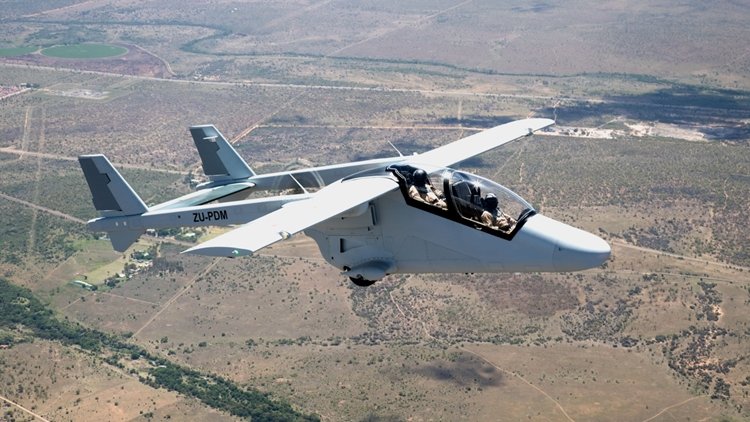
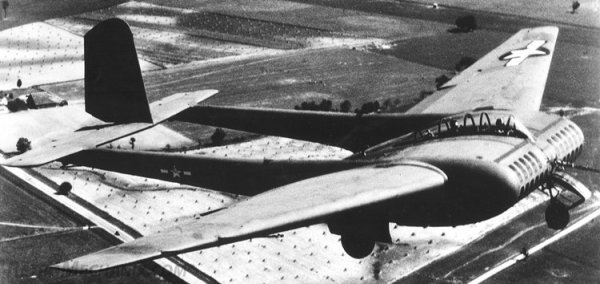

01.jpg.a34cd2b8c27e97e596776f027333a502.jpg)






